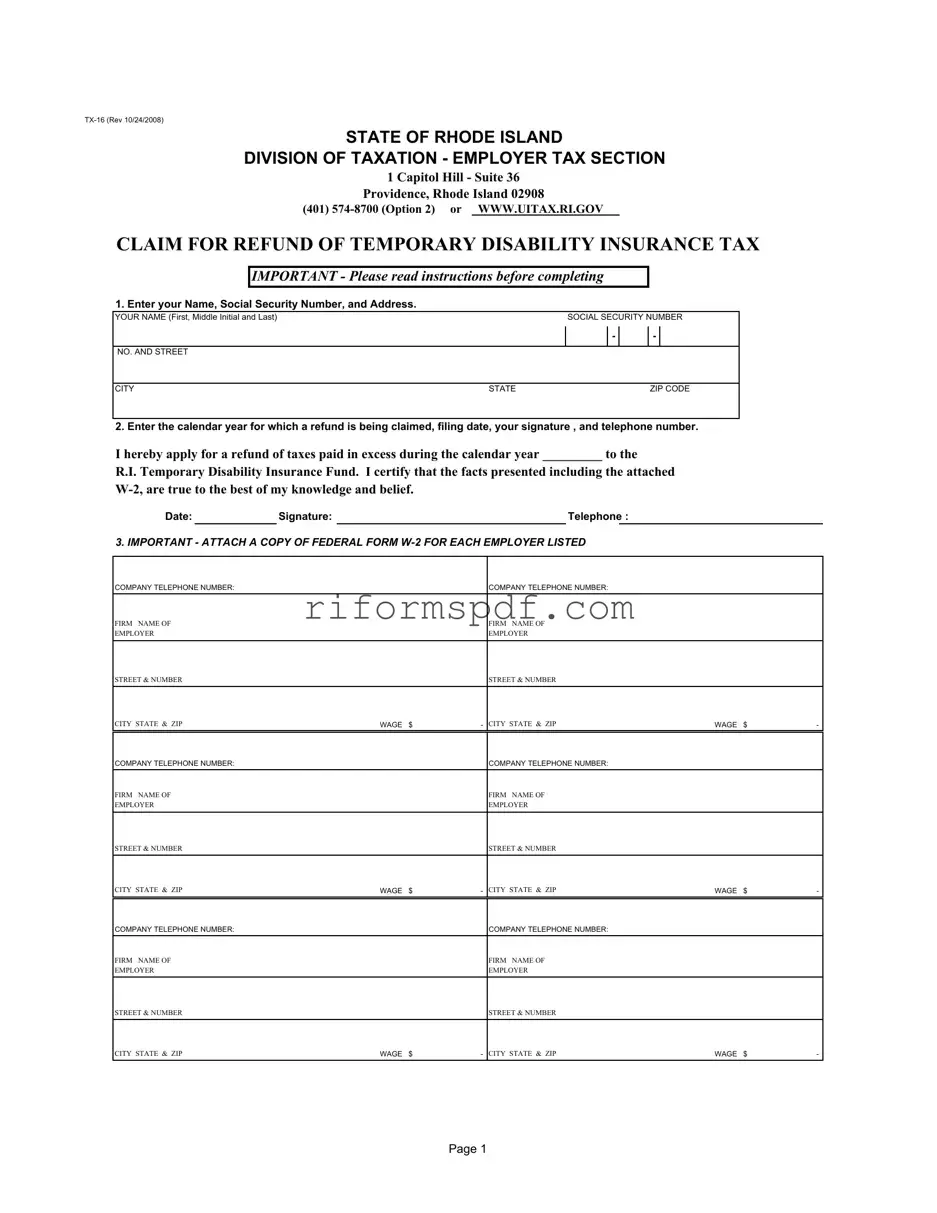The Rhode Island Tx 16 form serves as a critical tool for individuals seeking a refund of overpaid Temporary Disability Insurance (TDI) taxes. This form is specifically designed for those who have worked for multiple Rhode Island employers within a calendar year and have exceeded the taxable wage base for TDI contributions. Claimants must provide essential personal information, including their name, Social Security number, and address, along with the calendar year for which they are requesting a refund. It's important to attach a copy of the Federal Form W-2 from each employer, as this documentation is necessary for processing the claim. The form outlines specific wage bases for the years 2007 through 2009, emphasizing that refunds can only be requested for those years. Each spouse must file separately, and claims for refunds under one dollar will not be processed. Completing the form accurately is crucial, as missing information can delay or prevent the refund. The process is straightforward, but attention to detail is essential to ensure a smooth experience.
